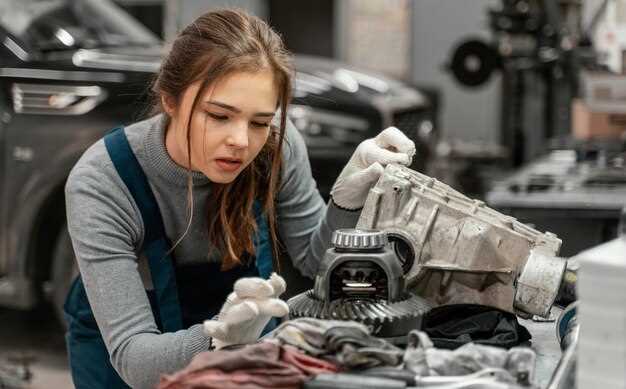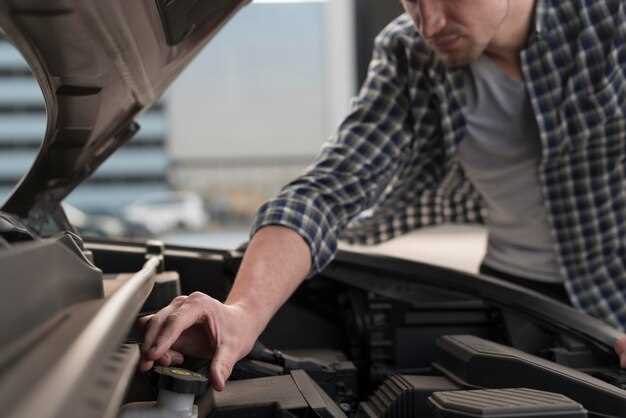
A starter motor is a critical component in any vehicle’s ignition system. When it malfunctions, it can prevent your car from starting, leaving you stranded and frustrated. Understanding the signs of a faulty starter motor and knowing how to replace it can save you time and money, allowing you to get back on the road quickly.
Many car owners may experience a variety of symptoms indicating that their starter motor is failing. These can include clicking sounds when turning the key, the engine not cranking, or intermittent starting issues. Recognizing these early signs is vital, as it allows you to address the problem before it leads to more severe complications.
This comprehensive guide will walk you through the step-by-step process of replacing a faulty starter motor. From gathering the necessary tools and safety equipment to the actual installation procedure, each phase will be detailed to ensure you complete the task efficiently and effectively. Whether you are a seasoned mechanic or a DIY enthusiast, this guide aims to equip you with the knowledge needed to tackle this common automotive repair with confidence.
Identifying Symptoms of a Faulty Starter Motor

Recognizing the signs of a faulty starter motor is essential for preventing more extensive damage to your vehicle’s electrical system and ensuring a smooth driving experience. Here are key symptoms to look out for:
- Clicking Noise: When you turn the ignition key and hear a rapid clicking sound, this often indicates that the starter is not engaging properly due to low battery power or a failing starter motor.
- Engine Doesn’t Crank: If the engine fails to crank or shows no signs of turning over when you turn the key, the starter motor may not be receiving the necessary power to initiate the starting process.
- Intermittent Starting Issues: Difficulty starting the engine on some occasions but not others can be a sign of a failing starter. This inconsistency might indicate that the components within the starter are wearing out.
- Smoke or Burning Smell: Any visible smoke or burning smell coming from the starter area can signal overheating or internal failure, requiring immediate attention.
- Dashboard Warning Lights: If you notice the battery or check engine light illuminating on the dashboard, it could indicate an issue with the starter motor or the overall electrical system.
- Unusual Sounds: Grinding, whirring, or any abnormal noises when attempting to start the engine can confirm mechanical failure within the starter motor mechanism.
If you experience any of these symptoms, it’s advisable to conduct further diagnostics or consult with a professional to avoid potential complications and ensure safe vehicle operation.
Tools Required for Starter Motor Replacement
Replacing a faulty starter motor requires specific tools to ensure the job is done efficiently and safely. Below is a list of essential tools needed for this process:
1. Socket Set: A comprehensive socket set is crucial. You’ll typically need various sizes, including both metric and standard, to remove bolts securing the starter motor. Common sizes include 10mm, 13mm, and 15mm.
2. Ratchet and Extensions: A ratchet handle allows for quicker turns, while extensions help you reach bolts in tight spaces. This combination is vital for accessing hard-to-reach areas around the starter motor.
3. Wrench Set: In addition to sockets, an adjustable or combination wrench set may be necessary for bolts that are not accessible with a socket. Ensure you have both metric and standard wrenches on hand.
4. Screwdrivers: A set of screwdrivers, both flat-head and Phillips, is needed for removing any screws that may be securing components in place or for accessing the starter motor itself.
5. Pliers: Needle-nose pliers are useful for gripping and manipulating wiring or small parts found around the starter motor. They can help in removing clips or connectors that hold wires in place.
6. Torque Wrench: A torque wrench is necessary for properly tightening bolts to the manufacturer’s specifications. This ensures that the starter motor is secured correctly without over-tightening, which could cause damage.
7. Battery Terminal Cleaner: A battery terminal cleaner helps remove corrosion from the battery terminals, ensuring a proper electrical connection once the new starter motor is installed.
8. Safety Gear: Always wear safety glasses and gloves when working under the hood of a vehicle. This protects your eyes and hands from potential injuries from tools, sharp edges, or battery acid.
Gathering these tools before starting the replacement process will make the job smoother and more efficient, ensuring that you have everything you need at your fingertips.
Step-by-Step Process to Remove the Old Starter Motor
Removing a faulty starter motor requires careful attention to detail and proper tools. Follow these steps to ensure a successful removal.
Step 1: Safety First
Before starting, ensure the vehicle is parked on a flat surface. Disconnect the negative terminal of the battery to prevent any electrical accidents.
Step 2: Locate the Starter Motor
The starter motor is typically located near the engine, often at the bottom, where the engine and transmission meet. Refer to your vehicle’s manual for the exact location.
Step 3: Remove Obstructions
Inspect the area around the starter motor for any components that may obstruct access, such as the air intake or engine covers. Carefully remove these components using the appropriate tools.
Step 4: Disconnect Electrical Connections
Remove the electrical connections from the starter motor. This generally involves unscrewing the terminal bolts. Use caution and ensure you note their arrangement for reinstallation.
Step 5: Unscrew the Starter Motor
Locate the bolts securing the starter motor to the engine or transmission. Use a socket wrench to carefully unscrew these bolts. Keep them in a safe place for reuse.
Step 6: Extract the Starter Motor
With the bolts removed, gently pull the starter motor away from its mounting position. If it is stuck, lightly tap it with a rubber mallet to loosen it without damaging other components.
Step 7: Inspect and Clean
Before installation of the new starter motor, inspect the area for any debris or signs of damage. Clean the mounting surface to ensure proper fit for the new starter.
By following these steps methodically, you will successfully remove the old starter motor and prepare your vehicle for the installation of a new one.
Installing the New Starter Motor Properly
To ensure the reliable functioning of your new starter motor, follow these steps carefully during the installation process.
1. Position the New Starter Motor: Begin by aligning the new starter motor with the mounting holes on the engine block. Ensure that the starter is positioned correctly to engage seamlessly with the flywheel.
2. Secure the Fasteners: Insert the mounting bolts through the starter motor’s holes into the engine block. Tighten these bolts using a socket wrench, securing the starter motor firmly in place. Be cautious to avoid over-tightening, which could damage the mounting points.
3. Connect the Electrical Wiring: Attach the positive battery cable to the starter motor’s terminal, ensuring a tight and secure connection. Next, connect the smaller signal wire, usually marked as the “S” terminal, which activates the starter motor when the ignition is turned on.
4. Reattach the Battery Ground: If you disconnected the battery during the replacement process, reconnect the negative terminal. Make sure this connection is clean and secure to prevent electrical issues.
5. Double-Check All Connections: Review your work and verify that all bolts are tightened and all wiring is properly connected. Loose connections can lead to starter malfunction or electrical failures.
6. Test the Starter Motor: Once everything is installed, turn the ignition to the ON position. Listen for any unusual sounds and check that the vehicle starts smoothly. If issues arise, reassess your installation process to pinpoint any potential errors.
Following these guidelines will help you install your new starter motor properly and ensure optimal performance for your vehicle.
Common Mistakes to Avoid During Replacement
Replacing a faulty starter motor can be straightforward, but several common mistakes can complicate the process. Avoiding these pitfalls ensures a successful installation and saves time and money.
1. Neglecting to Disconnect the Battery: One of the most critical steps before starting any electrical work is disconnecting the battery. Failing to do so can lead to electrical shorts, damage to the starter, or even personal injury.
2. Using Incorrect Tools: Using the wrong tools can damage the starter or surrounding components. Ensure you have the correct socket sizes and wrenches before beginning the replacement to avoid stripping bolts or damaging connectors.
3. Skipping the Inspection: Before installing the new starter, inspect the battery cables, connections, and related components for wear or corrosion. Ignoring these can lead to continued issues after the replacement.
4. Not Aligning Properly: When installing the new starter, ensure it is properly aligned with the mounting holes. Misalignment can cause bolts to strip or the starter to function improperly.
5. Over-tightening Bolts: While bolts should be secure, over-tightening can strip threads or crack the starter housing. Follow manufacturer specifications for torque settings to prevent damage.
6. Forgetting to Test: After installation, it’s essential to test the new starter before reassembling everything. A simple ignition test can confirm that the starter is functioning correctly, saving time if adjustments are necessary.
7. Ignoring Manufacturer Instructions: Each vehicle may have specific procedures for starter replacement. Always refer to the manufacturer’s manual for any unique steps or precautions pertinent to your model.
By being aware of these common mistakes, you can ensure a smoother and more effective replacement process for your faulty starter motor.
Testing the New Starter Motor After Installation
Once the new starter motor has been successfully installed, it is essential to test its functionality to ensure that it operates correctly. Begin by rechecking all electrical connections to confirm they are secure and free from corrosion. Tighten any loose terminals and clean connections if needed.
Next, reconnect the battery, ensuring that the positive and negative cables are attached to the correct terminals. After securing the connections, enter the vehicle and turn the ignition key to the “start” position. Listen for any unusual noises such as grinding or clicking. A smooth, quiet operation indicates proper functioning.
If the starter engages but the engine does not crank, it may signal an issue with the battery or ignition system rather than the starter itself. Use a multimeter to measure the voltage at the starter motor while attempting to start the vehicle. A reading below 12 volts may indicate a weak battery.
In cases where the starter motor does not engage at all, check the starter relay and fuses. A failed relay can prevent the motor from receiving power. Additionally, verify the transmission is in “Park” or “Neutral.” Sometimes, improperly set gear can inhibit starting.
If everything appears normal, consider performing a load test on the starter motor. This involves applying power to the starter when disconnected from the vehicle to determine if it can function under load. Monitoring it during this method can help identify any functional deficiencies.
After confirming successful operation, take the vehicle for a short drive to further assess performance. Pay attention to any signs of issues such as intermittent starting problems or unusual sounds. Ensuring the new starter motor is fully operational enhances overall vehicle reliability.














